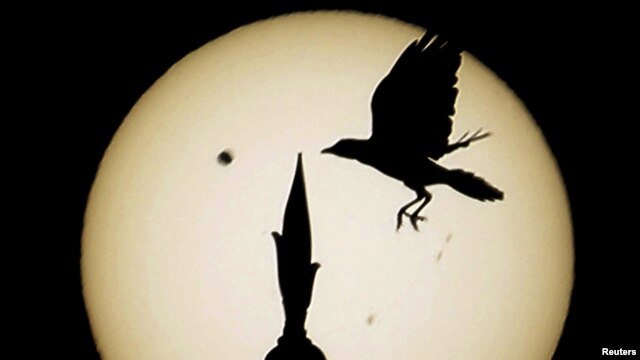Using special viewing glasses or telescopes, people in North and Central America, western Africa, most of Europe and many parts of the Asia-Pacific region watched for more than six hours as Venus crossed in front of the Sun in the form a small, black dot.
New York tourist Simon Beins said he was surprised by how visible the event was.
"Actually didn't know you were going to be able to look at it through just the little filter or even see it without a telescope, so it's pretty amazing."
Some viewed the transit of Venus on websites, including the European Space Agency and the U.S. space agency NASA sites, which streamed images taken by NASA's space-based Solar Dynamics Observatory.
Transits of Venus always occur in pairs, eight years apart, with more than a century separating each pair. Observations of transits in previous centuries allowed astronomers to calculate the distance between the Earth and the Sun -- some 150 million kilometers, said astrophysicist Harold Williams.
"If we didn't know the distance between the Sun and the Earth, we would not know the distance to the stars or the size of the galaxy or the size of the universe. So without knowing the distance between the Sun and the Earth, we would not know the size of the solar system, we wouldn't know the size and distance of anything, other than on the earth," Williams said.
Tuesday's transit bookends the 2004-2012 pair and will be the last time it occurs until 2117. The previous transit occurred in 1874

0 comments:
Post a Comment